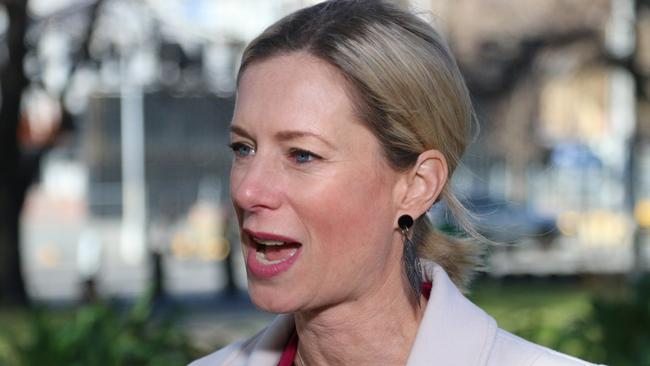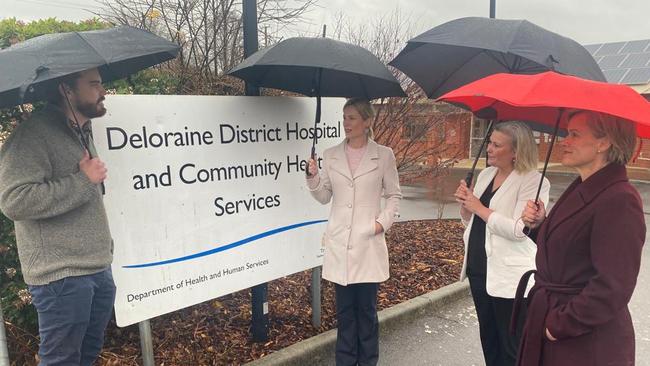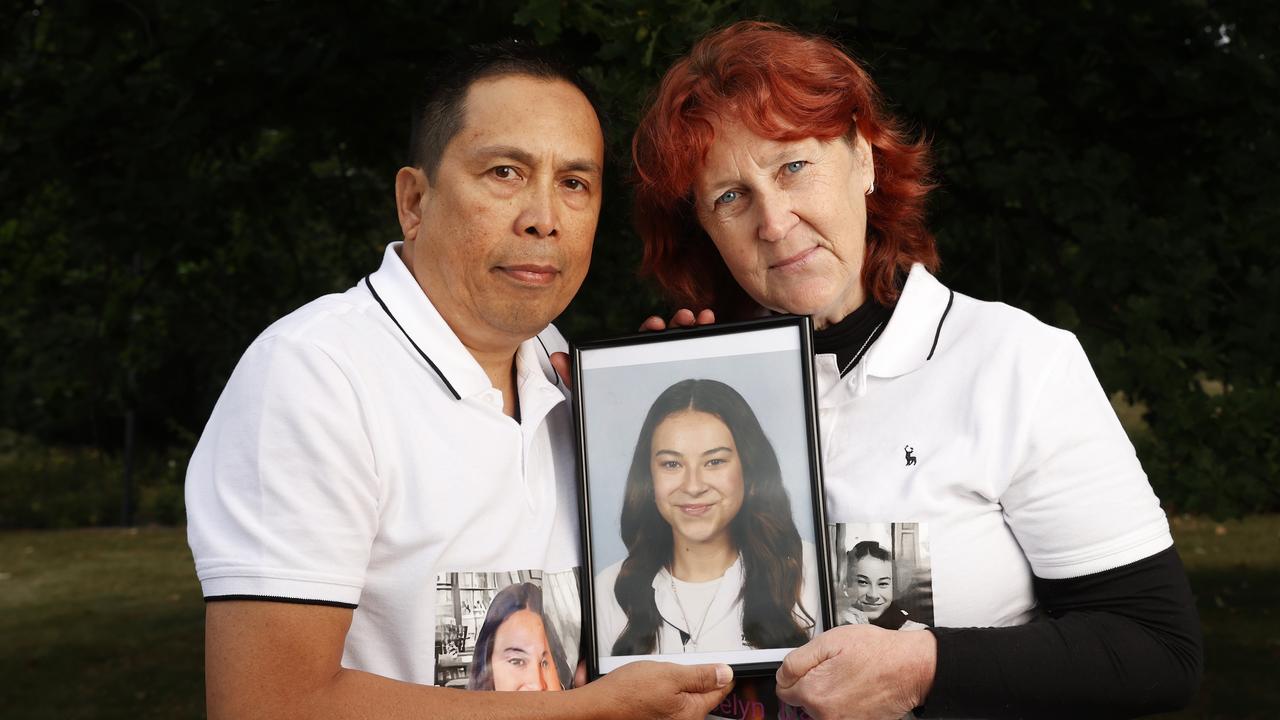Labor plans regional health boost with $90m for district hospitals
Investing in the state’s rural and regional hospitals would improve health outcomes for many Tasmanians who otherwise have to travel to major cities for care, Labor says. THEIR PLANS >

Politics
Don't miss out on the headlines from Politics. Followed categories will be added to My News.
A Labor government would boost funding to the state’s regional and rural hospitals to take pressure off swamped emergency departments.
Opposition leader Rebecca White and shadow health minister Anita Dow and member for Lyons Jen Butler visited Deloraine on Tuesday to announce the policy.
Labor’s $60m statewide local hospital fund would pay for capital improvements such as extra beds, waiting rooms, new diagnostic equipment and information technology upgrades, Ms White said.
And an additional $28m a year would help pay for rural generalist doctors, nurses, nurse practitioners and other staff.

Ms Dow told reporters creative ways to ease the strain on the state’s major hospitals were urgently needed.
“Our health system is in crisis, we’ve got chronic pressure on our acute hospitals across the state and we need to have practical plans that are available to local communities to ensure that people can get better access to health care, no matter where they live in Tasmania,” she said.
“We’ve got chronic bed block, we’ve got increasing pressure on the emergency departments and we need solutions to these issues.
“We’ve got 18 district and regional hospitals that are heavily underutilised, just 50 per cent utilisation in the last financial year.
“We can be doing more to provide services here in local communities, it makes sense to provide care closer to where people live and we have to think differently about the way that we provide health services across Tasmania.”
Ms White said the policy would end up saving money by taking pressure off busy emergency departments.
“This is an initiative that is a policy that really pays for itself — if just three fewer people a day present to the emergency department, this policy does pay for itself because we know that if we treat people closer to home sooner, it actually costs less than putting pressure on our very busy emergency departments and our overworked ambulance service.”
Rural generalist doctor Aaron Hawkins backed the policy, saying boosting capacity in rural and regional hospitals would help more people find appropriate care.
“District hospitals are really underutilised and expansion of those that are really great opportunity in Tasmania for us to take some of the pressure off the larger hospitals,” Dr Hawkins said.
“Something like a quarter of the presentations in Launceston emergency department, for example, from the regional areas.
“If we can have a properly staffed and properly equipped district hospital through the north, and we could take some of that burden off, and the flow on effects of that will impact things like ambulance ramping and bed block all through the health system.”



